Spiral Staircase
Spiral stairs wind around a newel (also the central pole). They typically have a handrail on the outer side only, and on the inner side just the central pole. A squared spiral stair assumes a square stairwell and expands the steps and railing to a square, resulting in unequal steps (larger where they extend into a corner of the square). A pure spiral assumes a circular stairwell and the steps and handrail are equal and positioned screw-symmetrically. A tight spiral stair with a central pole is very space efficient in the use of floor area. Spiral stairs have the disadvantage of being very steep – only if they are tight or are otherwise not supported by a center column. This is because of two reasons. The wider the spiral, the more steps can be accommodated per spiral. Therefore, if the spiral is large in diameter, via having a central support column that is strong (invariably large in diameter) and a special handrail that helps distributes the load,each step may be longer and therefore the rise between each step may be smaller, (equal to that of regular steps.) Otherwise, the circumference of the circle at the walk line will be so small that it will be impossible to maintain a normal tread depth and a normal rise height without compromising headroom before reaching the upper floor. To maintain headroom some spiral stairs have very high rises to support a very short diameter.

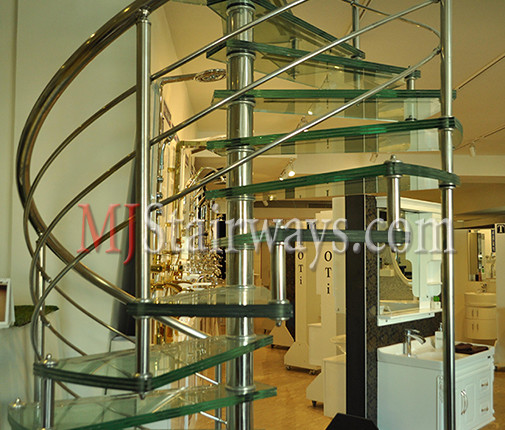
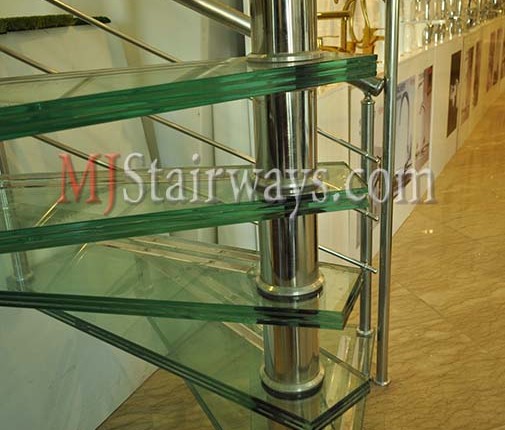
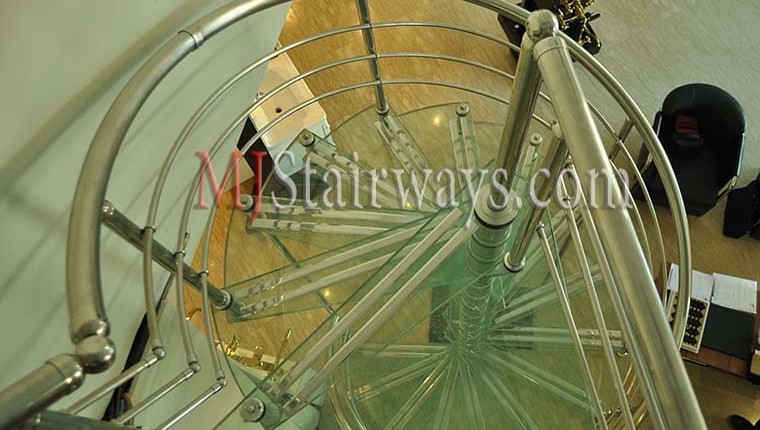

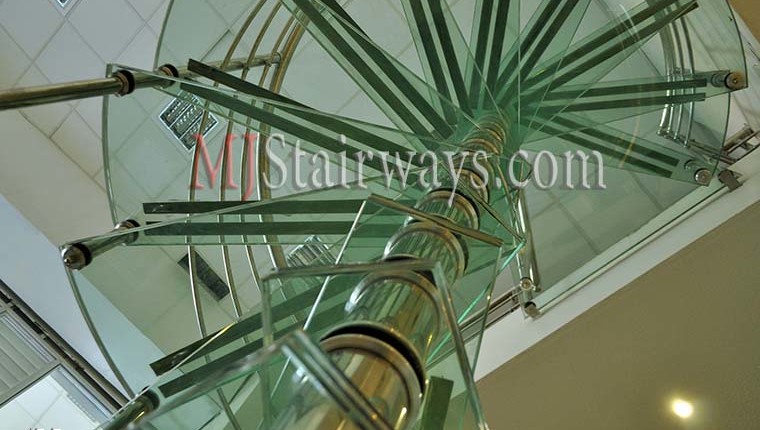
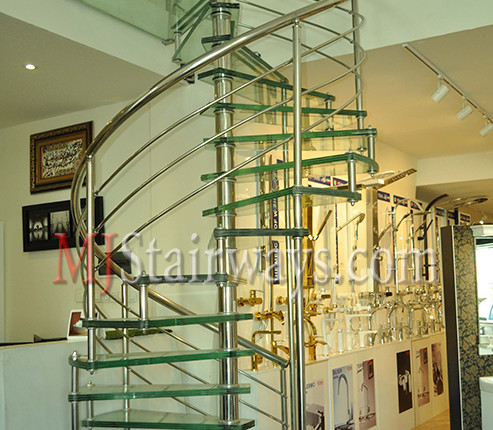
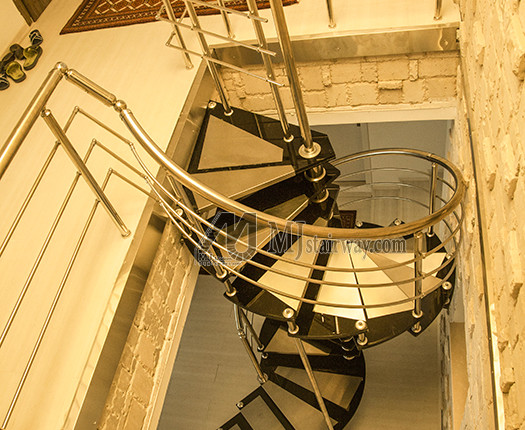
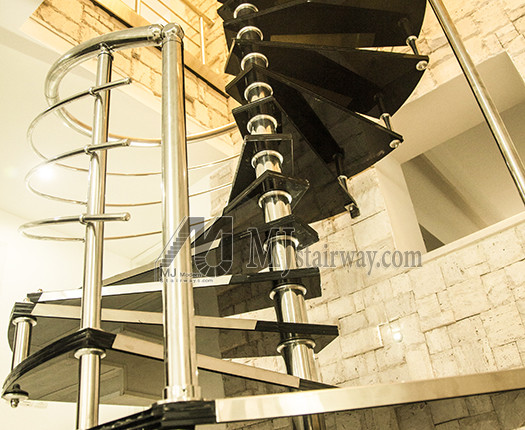
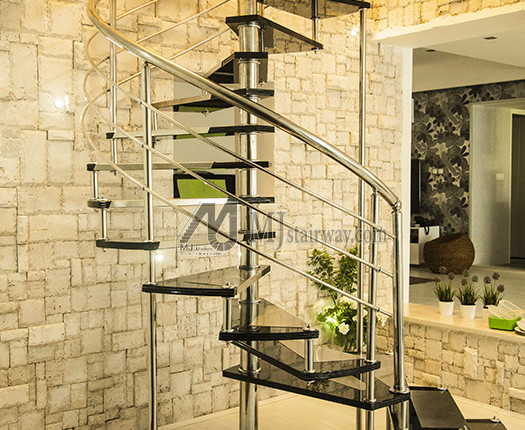
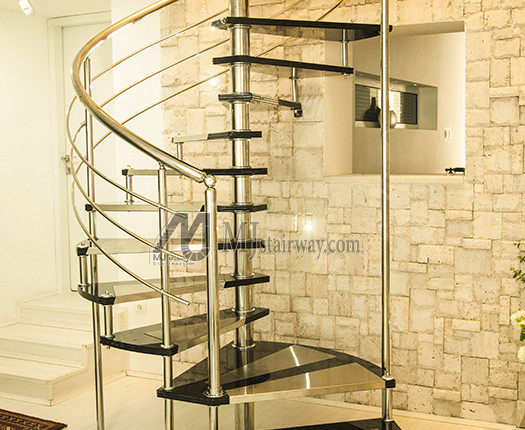
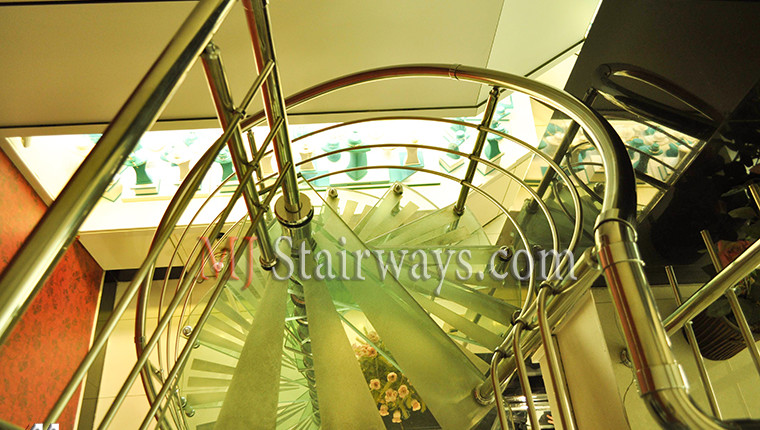
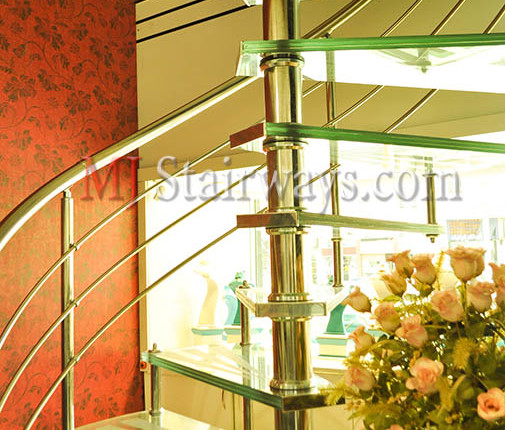
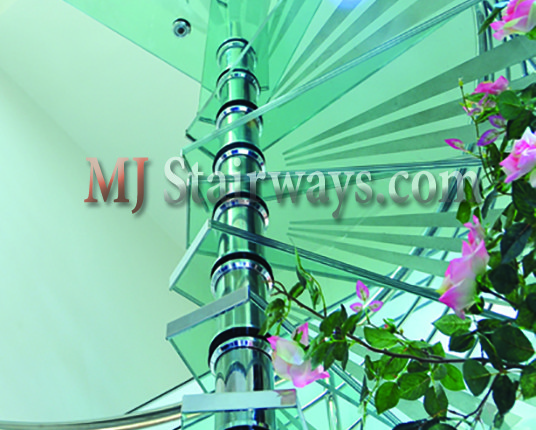
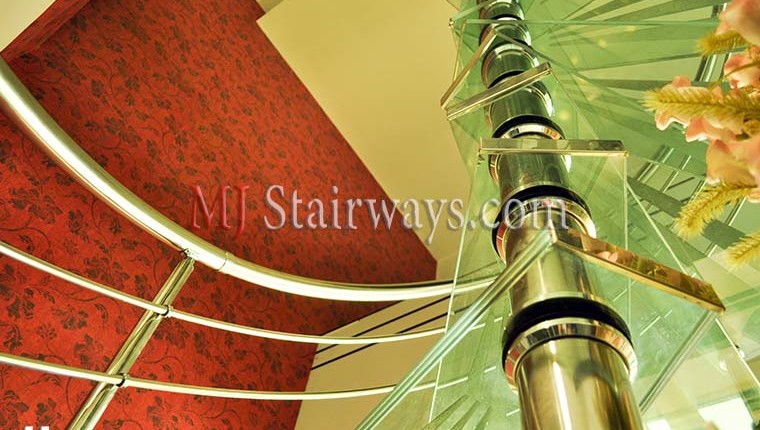
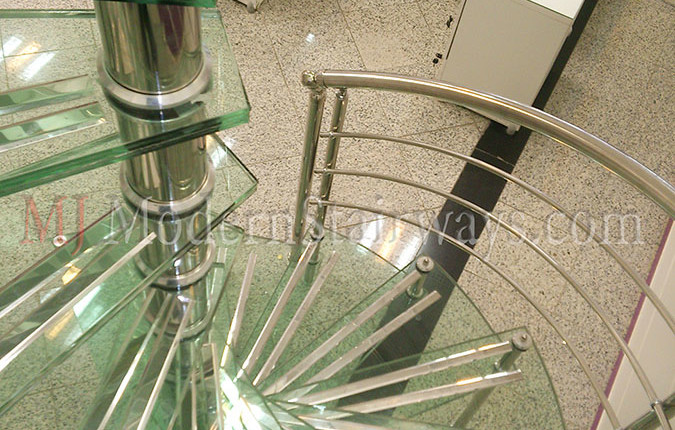
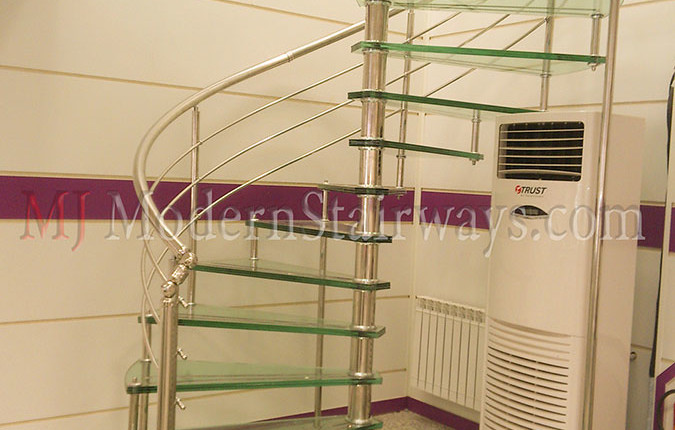
Comments